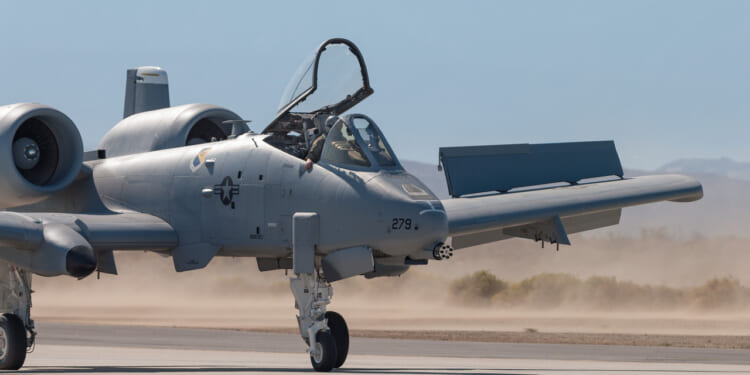The A-10 still serves the Air Force today after more than five decades in service.
The A-10 Thunderbolt II may be well into its fifth decade of service with the U.S. Air Force, but the legendary aircraft remains a fan favorite among industry experts and aviation buffs alike. Affectionately referred to as the “Warthog,” the Fairchild Republic-created A-10 remains the sole aircraft in the Air Force’s arsenal specifically designed for close air support. With an incredible service record and continued upgrades, the A-10 may serve the Air Force through the end of the decade. Even as the service relegates more and more Warthogs to retirement, the mighty platform remains a valuable player in the U.S. military’s overseas operations.
An Overview of the Warthog
Though the urgency of developing new conventionally armed attack aircraft dwindled for the United States following World War II, the need for such a platform became evident soon after. The U.S. military’s primary aircraft during the Vietnam War was the aging Douglas A-1 Skyraider. While this platform served the United States well during the Korean War, its inability to provide adequate firepower hindered America’s progress in the Vietnam War. In all, the U.S. Navy lost at least 266 Skyraiders during the conflict.
To rectify the obvious shortfall in air power, then-Secretary of Defense Robert McNamara tasked the military with developing one long-range strike aircraft and one fighter bomber aircraft. To supplement the resulting F-4 Phantom and F-11 Aardvark platforms, the Air Force conceptualized the A-X program. The Warthog provided the U.S. military with a cost-friendly alternative to the Phantom and Aardvarks that could better counter the rising threat posed by the USSR’s all-weather attack operations.
Specs and Capabilities
While the Warthog is one nickname for the A-10, the formidable aircraft has also been dubbed the “titanium bathtub” due to the reinforced titanium armor positioned around the cockpit. This armor protects the crew from ground fire while the aircraft performs strafing runs against adversarial targets.
Known as a flying bomb-truck, the A-10 really shines when it comes to armament power. Equipped with the formidable GAU-8 Avenger 30mm gatling gun mounted on its nose, the Warthog provides unmatched close-air ground support. With its eleven store pylons, the aircraft can carry an external payload of nearly 7,260 kg, including up to ten Maverick air-to-surface missiles. As detailed by Air Force Technology, the AGM-65 missile can deploy an array of guidance systems like imaging infrared guidance and warheads. The A-10 can also launch the Sidewinder air-to-air missile, cluster bombs, electro-optically guided bombs, jammer pods, and other weapons.
The A-10 still serves the Air Force today after more than five decades in service, however, more and more Warthogs are being sent to the boneyard. Last year, at least thirty-nine A-10C aircraft were relegated to retirement, according to data from the 309th Aerospace Maintenance and Regeneration Group at Davis-Monthan Air Force Base. This number will likely be higher in 2025. The introduction of next-generation platforms will ultimately wipe out the remaining A-10 fleet altogether.
About the Author: Maya Carlin
Maya Carlin, National Security Writer with The National Interest, is an analyst with the Center for Security Policy and a former Anna Sobol Levy Fellow at IDC Herzliya in Israel. She has by-lines in many publications, including The National Interest, Jerusalem Post, and Times of Israel. You can follow her on Twitter: @MayaCarlin. Carlin has over 1,000 articles published over the last several years on various defense issues.
Image: Angel DiBilio / Shutterstock.com


















